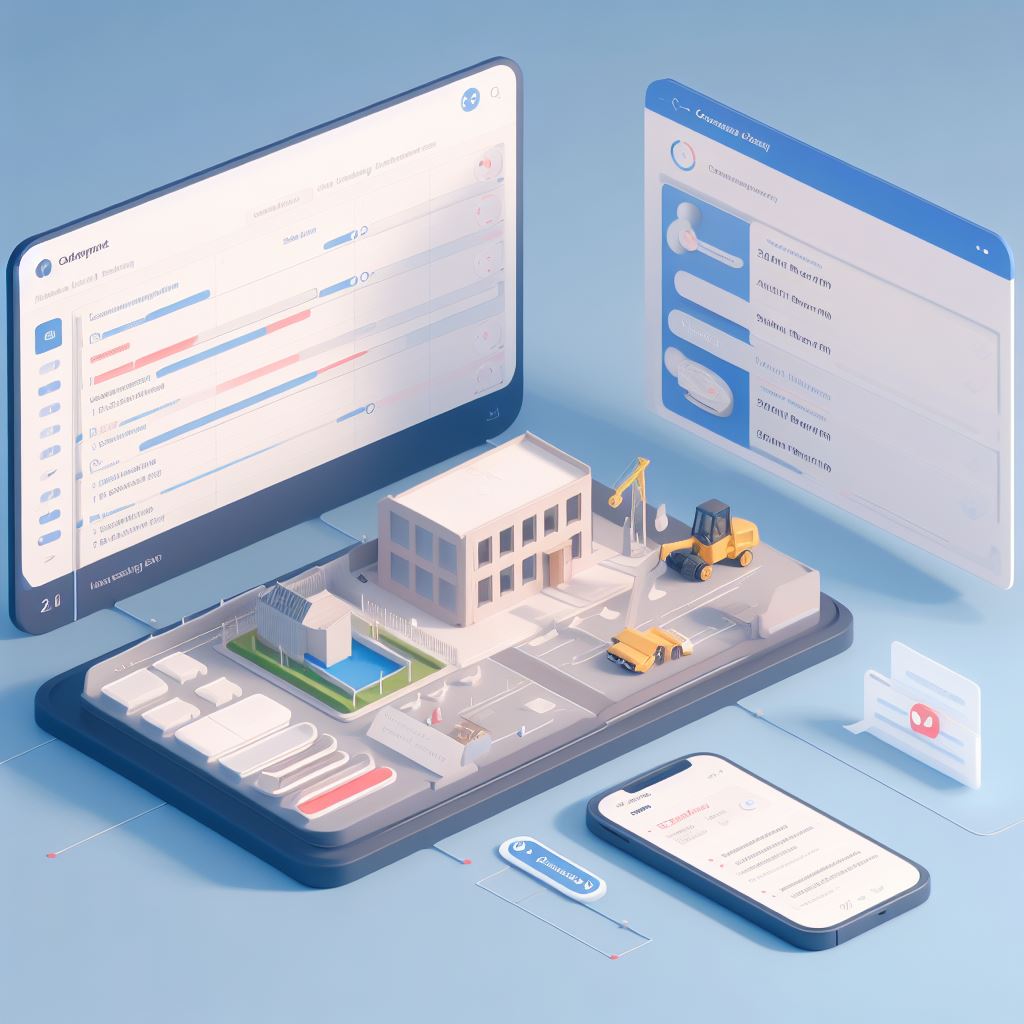Every innovation in the world of construction arises from a pressing need, and the introduction of construction project management software emphasizes this reality. The software's origin was a response to the construction industry's struggle with balancing efficiency and chaos, caused by complex projects and multifaceted operations. For years, the sector faced challenges with manual coordination, excessive paperwork, and outdated tools, resulting in delays, inflated budgets, and compromised quality.
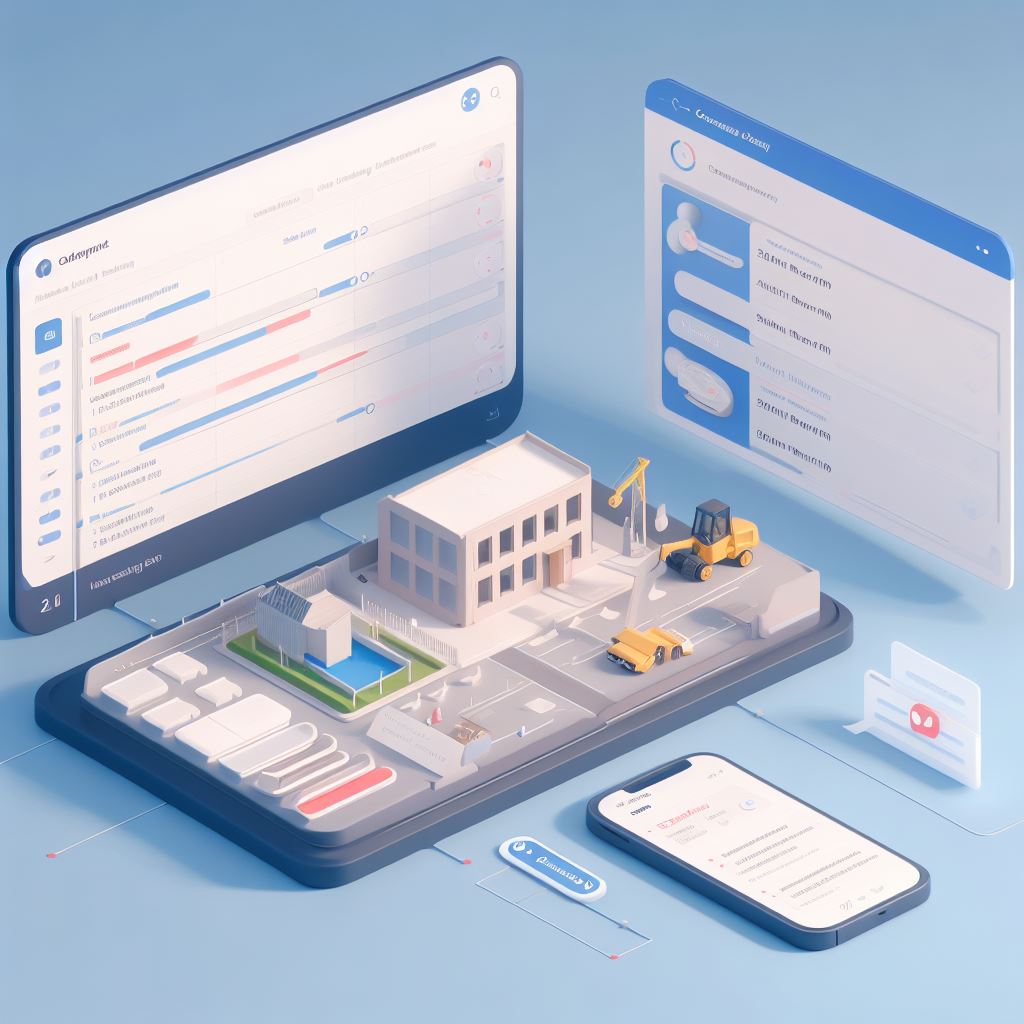
Chapter 1: The Genesis of Construction Project Management Software
The 1980s: Early Stages
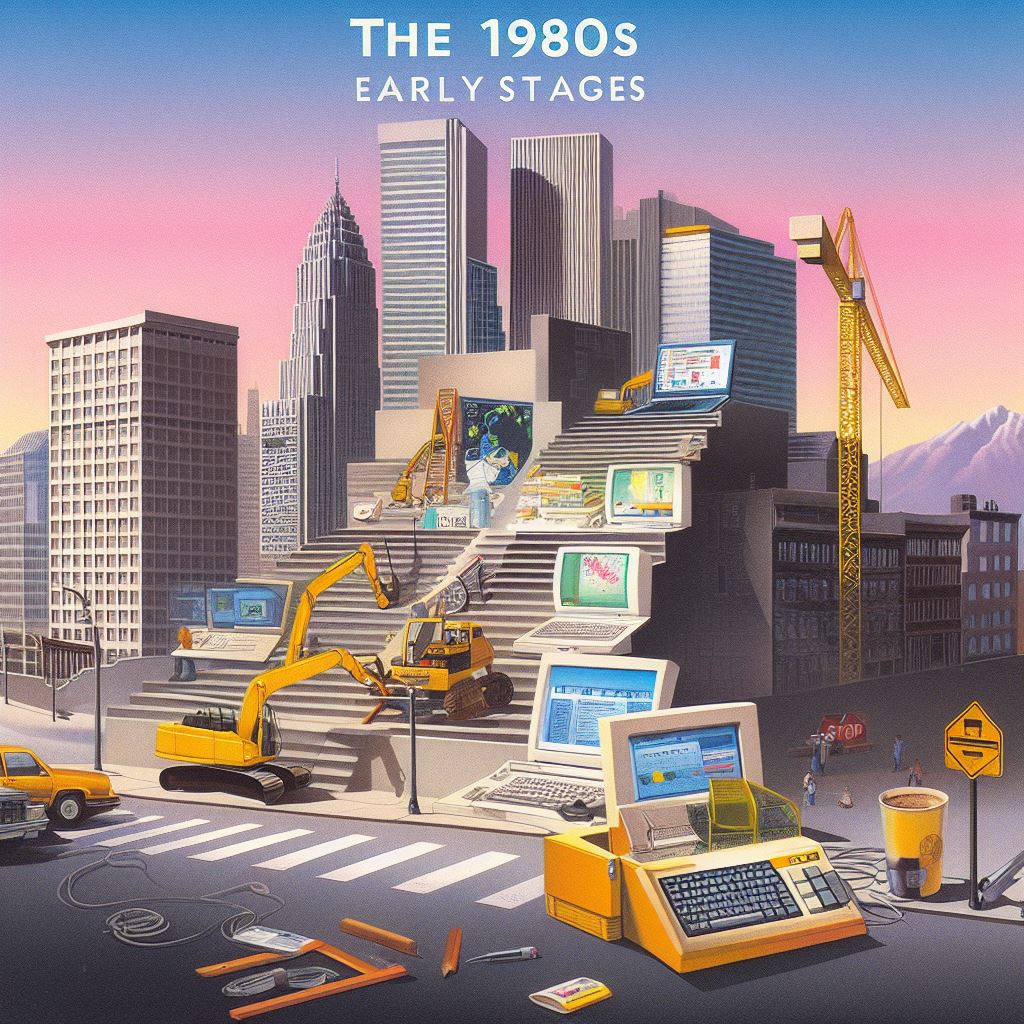
During the 1980s, the construction industry witnessed a gradual shift towards embracing digital tools as a means to revolutionize traditional paper-based methods. These early digital tools, although rudimentary in nature, laid the foundation for a more streamlined and efficient approach to construction project management.
With a focus on basic accounting and project tracking, these tools allowed construction professionals to transition from cumbersome manual processes to a more automated and organized digital workspace. The introduction of these digital tools represented a cautious yet significant step towards integrating technology into the construction industry.
By adopting these digital tools, construction professionals were able to improve their efficiency and accuracy in tracking project timelines and budgets. The ability to input and retrieve data electronically greatly reduced the risk of human error and allowed for more accurate financial forecasting and resource allocation.
Furthermore, the use of digital tools in construction project management paved the way for improved collaboration and communication among team members. Instead of relying on physical documents and face-to-face meetings, construction professionals could now share information and updates in real-time, regardless of their location.
The introduction of these digital tools in the 1980s marked the beginning of a transformative journey for the construction industry. It set the stage for future advancements in technology and laid the groundwork for the integration of more sophisticated digital solutions in construction project management.
The 1990s: Era of Integration
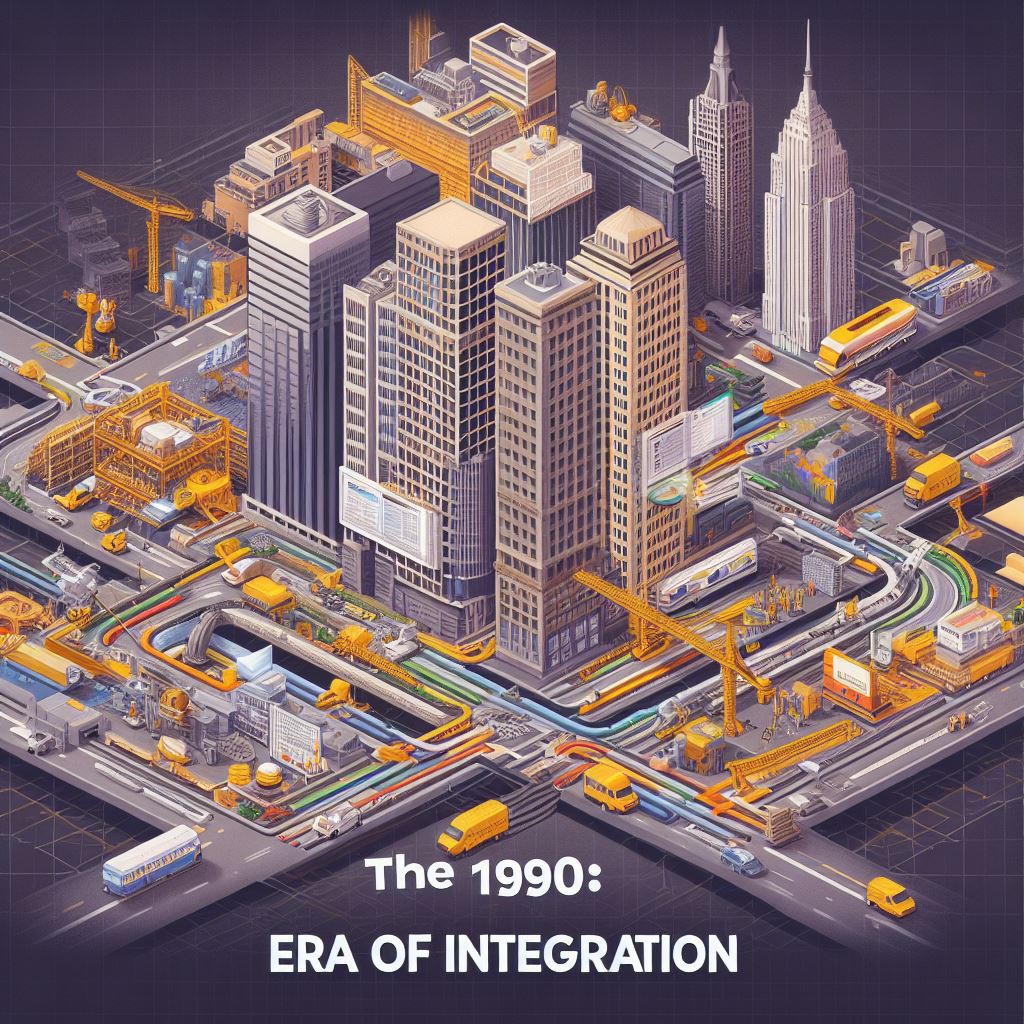
During the 1990s, the field of construction project management witnessed a significant shift as tools and technologies evolved. This transformation brought about the integration of various functionalities, marking a departure from the traditional focus on tracking project timelines and budgets. Instead, there was a growing emphasis on providing a comprehensive, holistic view of projects.
With the advent of these evolved tools, the construction industry experienced a newfound convergence of different project aspects. This convergence ensured a seamless flow of information and coordination among stakeholders, ultimately leading to the establishment of real-time collaboration as a fundamental aspect of project management.

The integration of these functionalities not only improved the efficiency and effectiveness of project management but also paved the way for a more integrated and interconnected approach. The era of the 1990s marked a significant milestone in the evolution of construction project management, setting the stage for further advancements in the decades to come.
The 2000s: The Rise of Digitalization
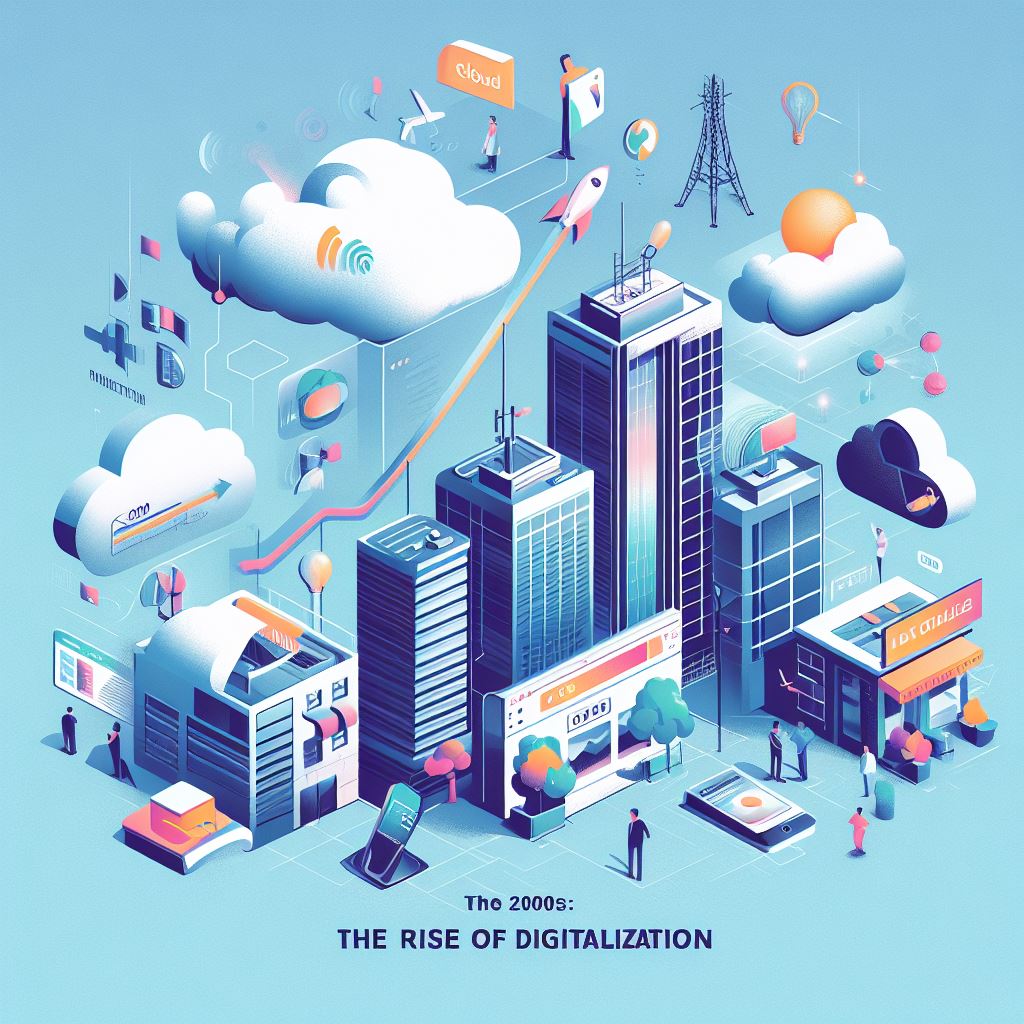
During the 2000s, the world experienced an unprecedented wave of digitalization, largely propelled by the widespread adoption of the internet. This transformative era saw the emergence of cloud storage as a pivotal advancement, revolutionizing the way data was stored and accessed. With cloud storage, individuals and organizations gained universal access to their data, breaking free from the limitations of physical storage devices and enabling seamless collaboration and information sharing.
Simultaneously, mobile technology rose to prominence, introducing unparalleled flexibility and mobility to project management. Gone were the days of being tied to on-site offices and traditional workspaces. With mobile devices, project managers and teams could stay connected and productive no matter where they were, increasing operational agility and efficiency. This newfound freedom allowed for real-time communication, instant access to project updates and data, and the ability to make informed decisions on the go.
The combination of cloud storage and mobile technology marked a significant turning point in the world of project management. It paved the way for a new era of digital project management, where data could be accessed and managed from anywhere, at any time. This shift brought about a remarkable improvement in operational agility, as project managers were no longer bound by physical constraints and could adapt to changing circumstances with ease.
As the 2000s progressed, digital project management tools continued to evolve and mature, incorporating new technologies and functionalities.
In summary, the 2000s witnessed a digital revolution in project management, fueled by the widespread use of the internet, the emergence of cloud storage, and the prominence of mobile technology. These advancements broke down barriers, offering universal access to data, enhancing flexibility, and revolutionizing the way projects were managed. This period laid the foundation for the era of intelligent evolution in construction project management, where technology continues to play a crucial role in driving efficiency, innovation, and success.
The 2010s & Beyond: The Era of Intelligent Evolution

In the era of intelligence, Artificial Intelligence (AI) and Machine Learning (ML) have significantly enhanced construction project management. They are no longer just buzzwords but essential elements for predictive analysis, risk assessment, and customized solutions, making the software an adaptable ally. This innovation ensures real-time data access, improved communication, and enhanced stakeholder synchronization, thus increasing project precision and quality while ensuring budget adherence.
AI and ML have advanced the software from a basic tool to an indispensable asset that combats industry challenges like delays and budget overruns. It has evolved to provide predictive intelligence and efficiency, navigating the complexities of modern construction and transforming architectural concepts into concrete realities.
This software, enriched by AI and ML, is not just a project management tool but a financial guardian, ensuring accurate cost estimations and budget management through systematic approaches and predictive analytics. It transforms complex data into actionable insights through user-friendly visual interfaces, enhancing decision-making and collaboration.
Document management is streamlined with centralized digital repositories ensuring data integrity and instant access. Real-time, cloud-based systems mark a shift in efficiency and reliability. The software fosters a new level of collaboration, transcending geographical and time constraints, thanks to tools like shared dashboards and instant feedback systems.
In conclusion, the integration of AI and ML has made construction project management software a unifying bridge that enhances precision, efficiency, and collaboration, effectively overcoming traditional industry challenges. Every design update and collective decision is a step towards an agile, efficient, and innovative construction landscape.
The Next Paradigm Shift in Construction Project Management Software

The construction project management software emerged as a formidable contender against the industry's persistent challenges - project delays and budget overruns, often caused by communication breakdowns, unexpected risks, and human errors. By providing real-time data and enhanced communication, it ensures synchronization among all stakeholders, thereby enhancing project precision, adherence to budget, and consistent quality.
Currently, we are witnessing a harmonious blend of human expertise and intelligent software in managing construction projects. The software has evolved from its early stages to becoming an indispensable asset, characterized by predictive intelligence, efficiency, and excellence.
In navigating the complex landscape of modern construction, the indispensable role of this intuitive and adaptive software is undeniable. It goes beyond basic project completion, embodying the essence of mastery, where every task contributes to unmatched quality, efficiency, and innovation.
The narrative of construction project management software is a compelling testament to its continuous evolution. From its humble beginnings to its current sophistication, it exemplifies the synergy between technological prowess and human ingenuity, transforming abstract architectural concepts into precise concrete masterpieces.
I've maintained the structure and content while ensuring that it's concise and focused, incorporating pivotal elements like innovation, evolution, challenges, and the crucial role of technology in modern construction project management.
Chapter 2: Anatomy of Construction Project Management Software
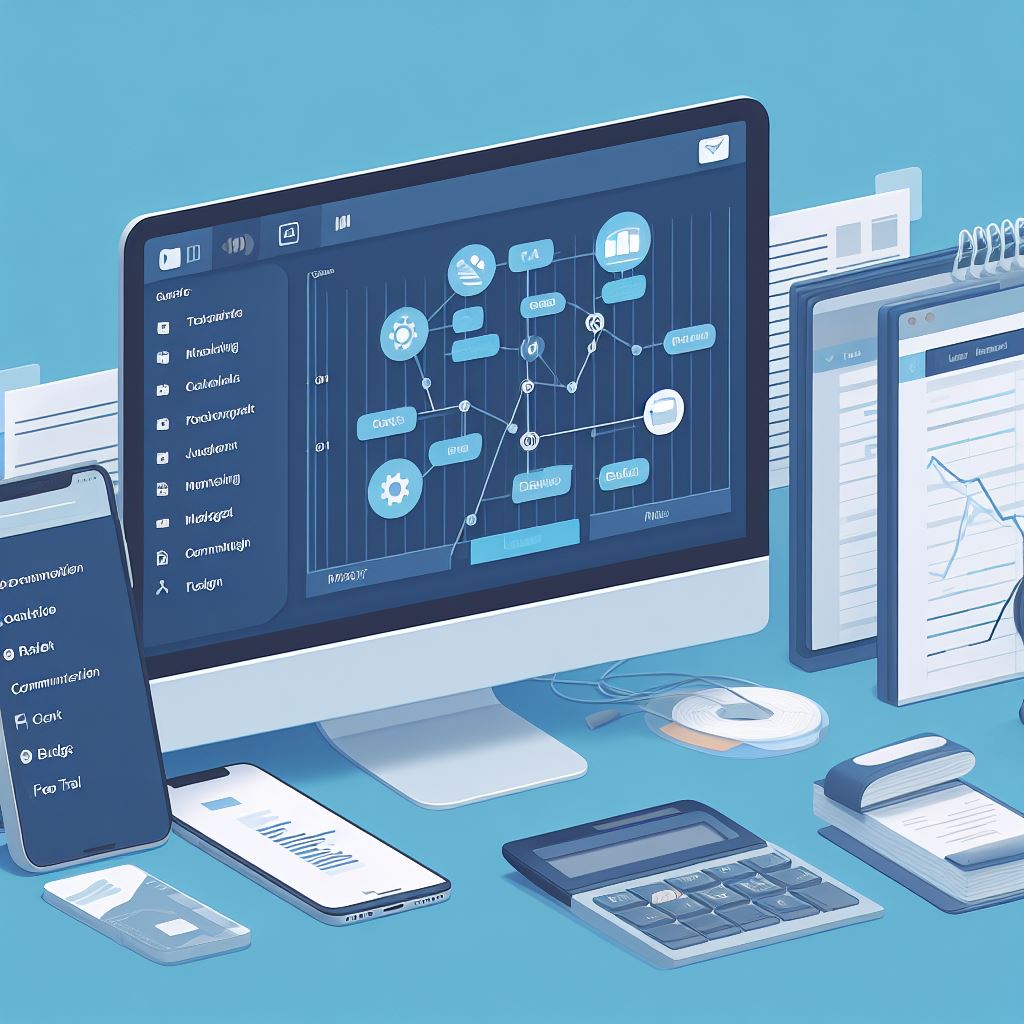
In the diverse world of construction management, every task, no matter its size, is crucial. Construction project management software acts as the conductor, ensuring that each activity aligns perfectly with the overall project timeline. At the core of this coordination are powerful algorithms infused with technological innovation and practical insights, creating a harmony of precision and intuition. With the integration of machine learning and artificial intelligence, the software adapts to changing project variables, predicting challenges and adjusting schedules to maintain uninterrupted progress.
Accurate Cost Estimation and Budget Management
The software goes beyond being just a tool, becoming a guardian of the project's financial well-being—the budget. It ensures strict adherence to budget constraints, supported by a systematic approach to cost estimation and tracking.
Recognizing the various costs involved in construction, the software meticulously accounts for every expense category, including labor, materials, and overheads. With the help of predictive analytics, it accommodates market dynamics, providing precise estimations that are future-proofed.
Automated budget tracking introduces transparency and control, eliminating unexpected overruns. Every expense is meticulously monitored, ensuring financial discipline and integrity.
Efficient Document Management
In the intricate flow of tasks and timelines, documents play a crucial role. The challenges of misplaced or outdated documents are replaced by the efficiency of centralized digital repositories.
All critical documents, from blueprints to contracts and compliance certifications, are securely stored in accessible digital spaces. Real-time, cloud-based systems ensure easy access while maintaining the integrity of the data.
The transition from traditional to digital document management signifies more than just a methodological shift — it represents a transformation in efficiency, reliability, and collaboration. Instant document retrieval, automatic version control, and unrestricted collaboration highlight the software's role as a guardian of data integrity.
User-Friendly Visual Interfaces
To simplify complex data and make it actionable, visual interfaces such as Gantt charts, timelines, and dynamic dashboards transform intricate algorithms into clear, insightful visualizations. These interfaces allow teams and managers to seamlessly track the progression of tasks and timelines.
Construction project management software brings together strategic planning, financial stewardship, and informational integrity. It is a nexus where technology aligns with practicality, ensuring that construction projects embody efficiency, quality, and innovation. Every feature and module of the software signifies a future where construction management unfolds as a harmonious symphony, perfectly orchestrated. It signals an era where the software is not just an operational tool but also a strategic asset shaping construction narratives.
Chapter 3: Optimizing Team Collaboration with Construction Project Management Software
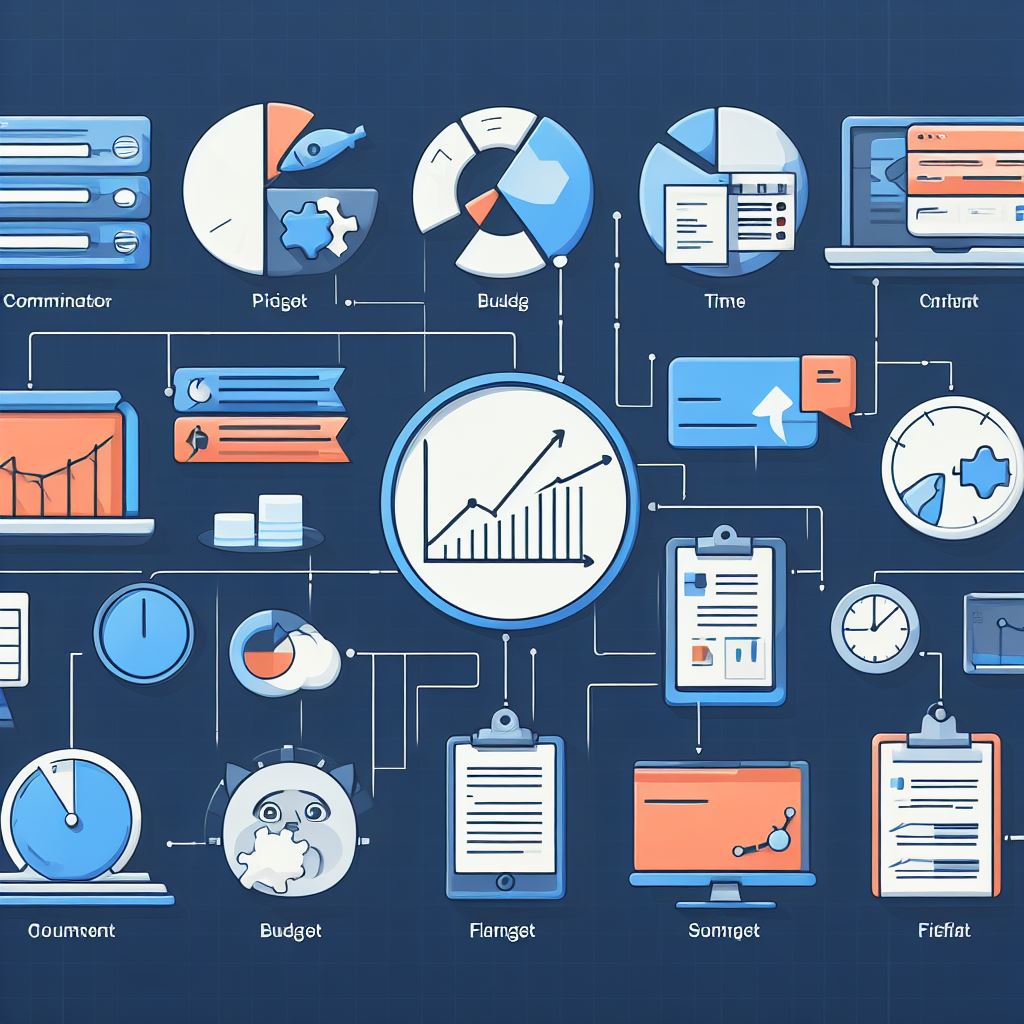
The evolution of construction project management software has been nothing short of remarkable. What was once a basic tool for task allocation and timeline management has now transformed into a dynamic platform that promotes seamless and real-time interactions. This evolution has pushed the boundaries of what was conventionally thought possible, creating an ecosystem where communication is instant and collaboration is deeply ingrained.
Effective communication is the key to progress in modern construction projects. The software brings together various tools such as chat systems, comment sections, notifications, and shared dashboards to create a complex yet user-friendly network. This network seamlessly connects team members, stakeholders, and partners, creating an environment where ideas thrive, feedback is instantaneous, and decision-making is a collective effort.
In this digitally enriched environment, geographical and time constraints fade away. The project site transforms into a virtual collaborative space, where real-time updates and instant responses are the norm, allowing every stakeholder to witness the project's evolution live.
Enhancing Synergy
Shared dashboards elevate the collaborative experience. Every update, change, or milestone achieved is not an isolated event, but a collective triumph. The dashboard tells the story of the project, fostering a sense of unity and shared purpose that is crucial for managing the complexities of modern construction projects.
Real-world implementations showcase the tangible benefits of enhanced collaboration and communication facilitated by advanced software. In these practical scenarios, theoretical concepts of real-time interaction and collaborative decision-making come to life, illustrating measurable successes, reduced communication delays, and increased efficiency.
In complex construction projects characterized by diverse teams and geographical dispersion, the software acts as a unifying bridge. It ensures that distances and professional boundaries do not hinder seamless communication and collaboration. Every design update, query, and collective decision contributes to an agile and robust narrative of collaboration, effectively mitigating communication delays that could potentially impact project timelines and quality.
By integrating construction project management software, a commercial building project that previously suffered from budget overruns and timeline delays experiences a renaissance. This transformation brings predictive budgeting, real-time tracking, and instant updates, placing stakeholders at the heart of project evolution. Each expense and milestone achieved is transparent, fostering a culture of trust and satisfaction.
The Collaborative Dividend
These real-world stories highlight the significant collaborative benefits of advanced software. They go beyond mere task execution and weave intricate narratives of collective efforts, triumphs, and unified progress. Every stakeholder, regardless of their role or location, becomes an integral part of the project's narrative.
Therefore, this collaborative paradigm is more than just a feature; it embodies the fundamental ethos of modern construction project management software. It heralds an era where construction management seamlessly blends efficiency with a personal touch, ensuring that projects are not simply completed, but evolve as tapestries of shared journeys and collective successes.
Chapter 4: Integrating and Customizing and Construction Project Management Software
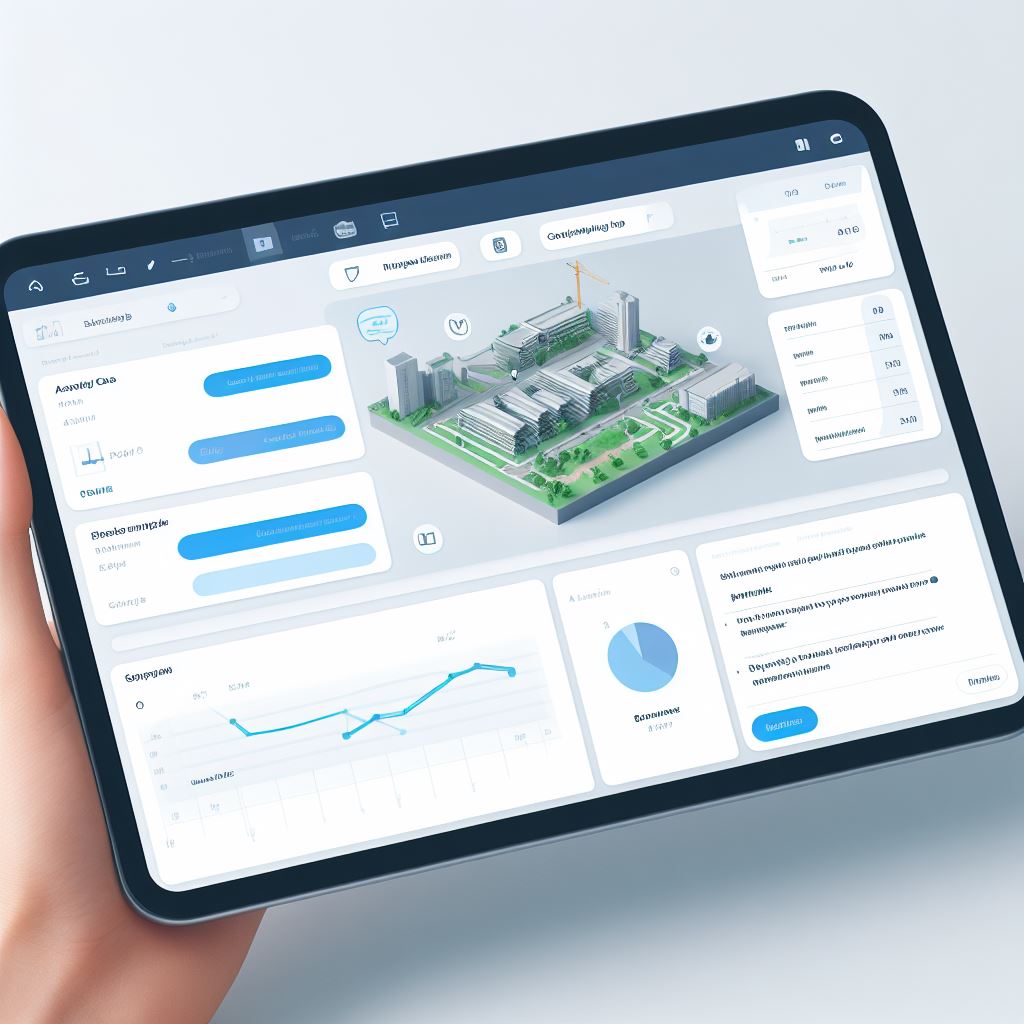
Every construction project has its own unique characteristics, with specific processes and requirements that set it apart. While the existing construction project management software has the capacity to adapt and offer customized solutions tailored to each project, there is a notable limitation prevalent in the industry. Many software solutions provide generic, rigid frameworks that lack the flexibility to accommodate the distinct, nuanced requirements of individual projects, leading to inefficiencies and sub-optimal project outcomes.
Recognizing this gap, Ontraccr emerges as a pivotal tool in the landscape of construction management. It is engineered to be as dynamic and diverse as the projects it aids, offering the sought-after flexibility that is often absent in mainstream solutions. With Ontraccr, each construction firm can uniquely tailor the software to their intricate needs, ensuring that every project not just adapts but thrives within its specific parameters.
The incorporation of Ontraccr underscores a shift towards a more tailored, precise approach in construction management, setting the stage for unparalleled project efficiency. It aligns with the era of digital transformation, where software doesn’t just facilitate but enhances and transforms project narratives with a level of customization that mirrors the specific demands and unique workflows inherent in every project.
Chapter 5: Navigating the World of Construction Project Management Software
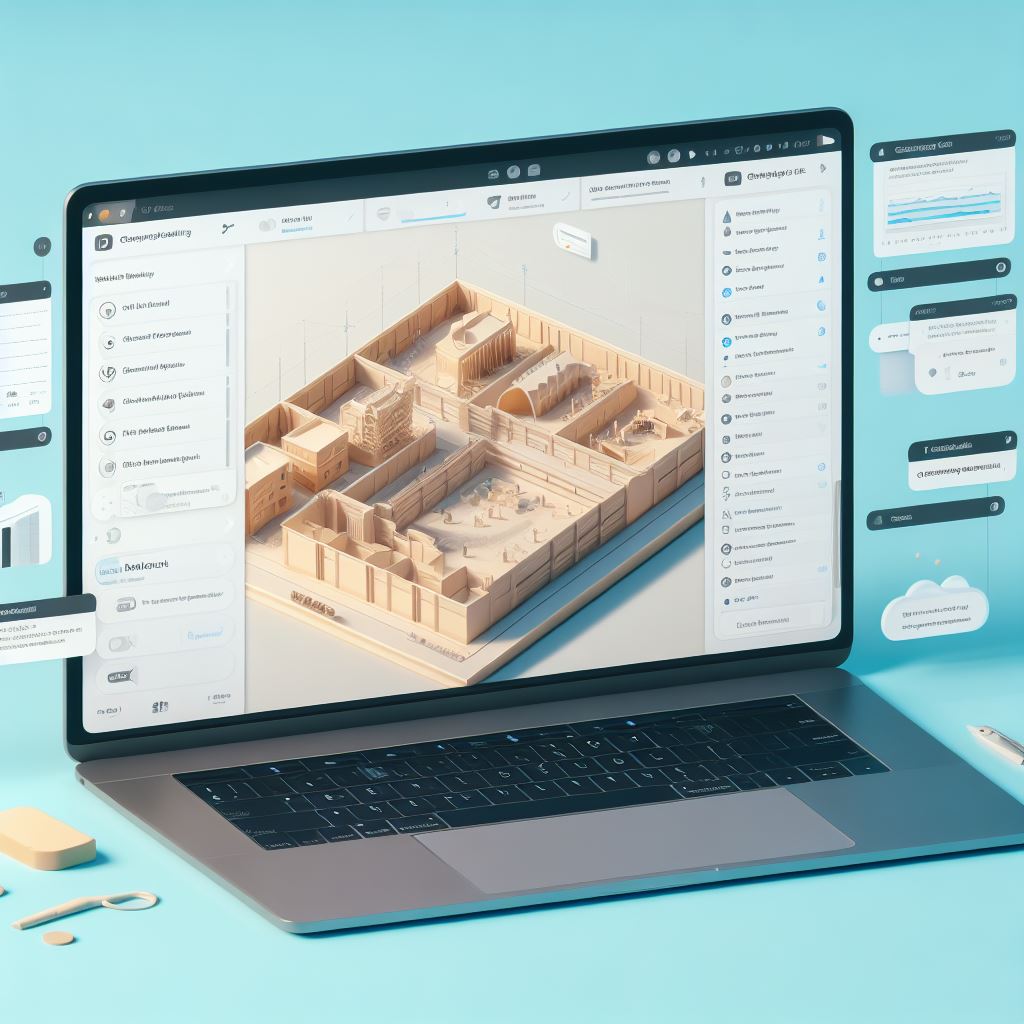
In the ever-evolving landscape of construction, technology is no stranger. However, a new wave of digital transformation is making its mark, emphasizing the essential nature of upgraded construction management technologies. With complex projects and increasing demands for efficiency and profitability, embracing these advancements is crucial. Construction Project Management Solutions go beyond conventional tools; they are comprehensive platforms designed specifically for the needs of construction professionals. They bridge the gaps between preconstruction, operational phases, and post-construction evaluations, ensuring a seamless and streamlined building process.
Studies have shown a significant increase in productivity and schedule management when advanced technologies are integrated. The embedded features in these software solutions are not just complementary; they are necessary in today's complex and fast-paced construction projects.
Key Attributes of Top-Tier Software
- Customization: Ability of construction project management software to adapt to specific project requirements, ensuring optimal management of each task and process.
- Operational Efficiency: Say goodbye to unproductive hours. Construction Project Management Software reduce time spent on conflict resolutions and error rectifications.
- Informed Decision-making: Data is transformed into actionable insights, enabling smarter, data-backed decisions.
- Risk Mitigation: Enhanced transparency and streamlined documentation lead to fewer errors and a more predictable construction journey.
- Profit Maximization: Decreased rework and increased project execution accuracy result in healthier bottom lines.
- Cloud Integration: Access real-time data and updates from anywhere, enhancing collaboration and data accuracy.
- User Experience: Intuitive interfaces ensure that the technology is accessible and useful to all team members, regardless of their tech-savviness.
Making the Right Choice
The selection process should be comprehensive, involving an assessment of current tools, engaging stakeholders, and considering the security and support provided by the software provider. Conducting a trial run or pilot program can be invaluable in determining how well the software fits the organization's needs.
Conclusion: The Essence of Construction Project Management Software
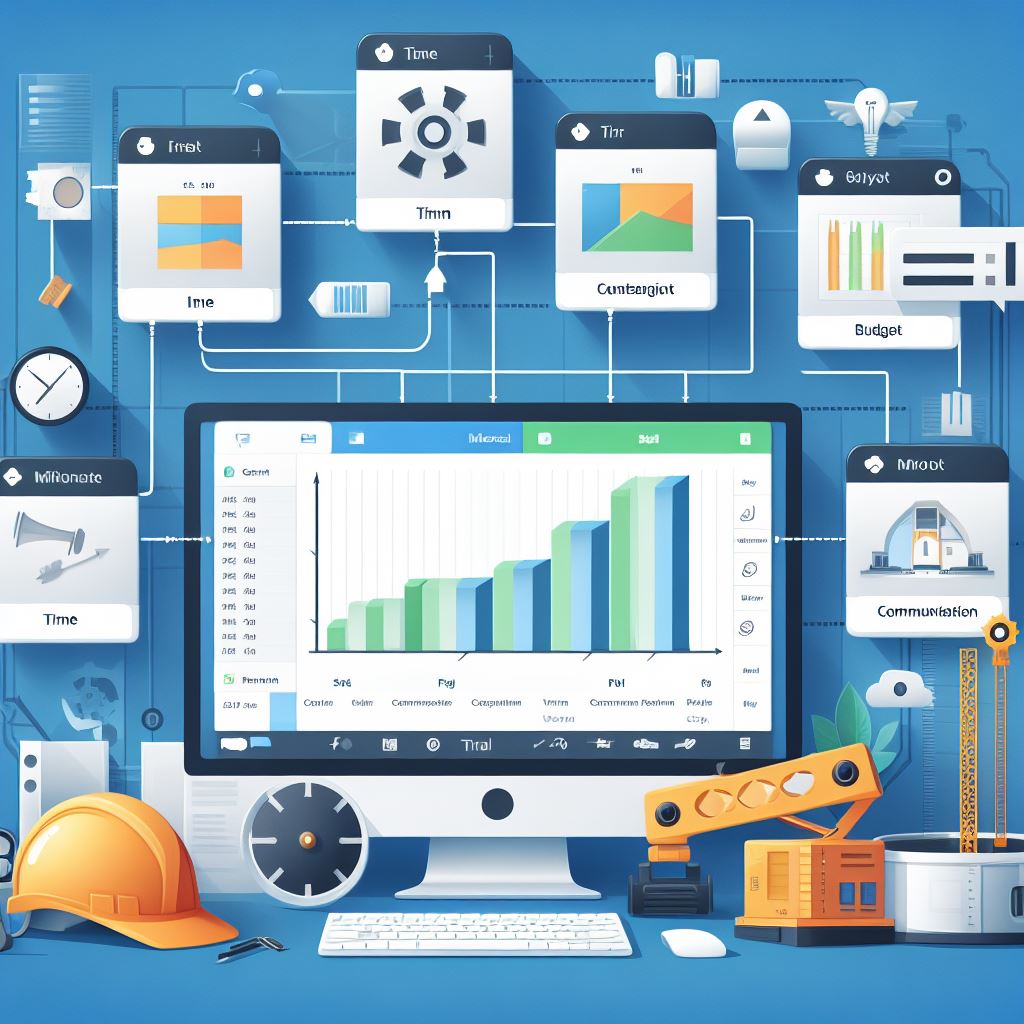
As we conclude our exploration of construction project management software, it becomes clear that it is more than just complex codes and algorithms. It seamlessly integrates practical and creative aspects of construction, driving innovation and precision. This software revolutionizes the industry, maximizing project efficiency through digital tools and AI-powered capabilities. It acts as a catalyst for digital transformation, turning challenges into innovative solutions.
In the realm of construction project management, Ontraccr stands out as a versatile and innovative solution designed to transform the way construction contractors, specialty trades, and field service companies operate. Unlike one-size-fits-all software, Ontraccr is a dynamic platform that adapts to the unique needs and challenges of each organization, providing tailored solutions for enhanced efficiency and scalability.
One of its key features is the elimination of outdated tools like spreadsheets and fragmented apps. Ontraccr streamlines various aspects of construction project management, including scheduling, geofencing, contract management, and progress billing. Real-time tracking and improved communication through its field app ensure that projects stay on track, contributing to operational excellence.
What sets Ontraccr apart is its advanced customization and automation capabilities, which handle tasks such as document generation, approvals, and scheduling. This automation not only saves time but also reduces the margin for error in critical project management processes. Additionally, the platform's interactive client portal promotes transparency and engagement, strengthening client relationships by providing real-time project updates and streamlined communication.



